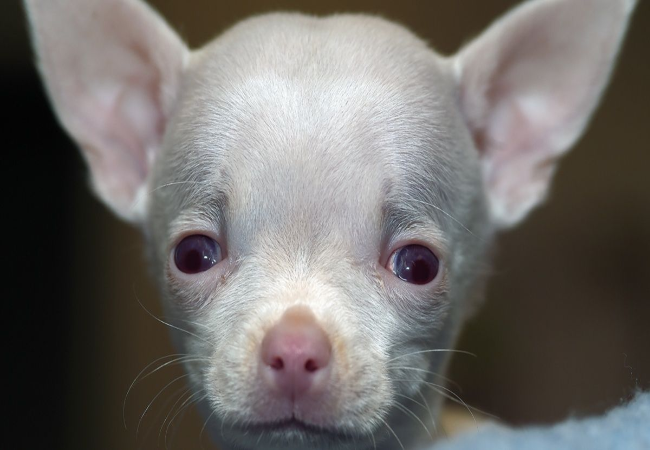Veterinary Guide to Canine Hydrocephalus 2025 🩺🐾

In this article
Veterinary Guide to Canine Hydrocephalus 2025 🩺🐶
By Dr. Duncan Houston BVSc
🧬 What Is Hydrocephalus?
Hydrocephalus, often called “water on the brain,” occurs when cerebrospinal fluid (CSF) accumulates within the brain's ventricles due to overproduction, blocked flow, or poor absorption. This leads to increased intracranial pressure and compression of brain tissue.
🎯 Types: Congenital vs. Acquired
- Congenital: Common in toy and brachycephalic breeds—Chihuahuas, Yorkies, Pugs—due to inherited ventricular malformations.
- Acquired: Results from obstruction (tumor, infection, hemorrhage) or inflammation blocking CSF flow.
👀 Recognizing It: Key Signs
Puppies with congenital hydrocephalus often show symptoms by 8–12 weeks of age, appearing with:
- Dome-shaped skull, open fontanel (“molera”).
- Behavioral issues: slow learning, house-soiling, circling, pacing.
- Neurologic signs: ataxia, vision problems, head pressing, seizures, weakness.
Acquired hydrocephalus may develop later with abrupt neurologic signs, stupor, or seizures, depending on the cause.
🔬 Diagnosis Steps
- Physical exam for skull shape, fontanel, neurologic assessment.
- Bloodwork (CBC/chemistry/UA) to rule out systemic issues.
- Skull ultrasound in young pups through the fontanel.
- CT or MRI to confirm ventricular enlargement and identify obstructions.
- CSF analysis if infection or inflammation is suspected.
🔧 Treatment Options
Medical Therapy
- Diuretics: Furosemide (0.5–4 mg/kg q12–24h), acetazolamide (10 mg/kg q6 8h) reduce CSF production.
- Corticosteroids: Prednisone (0.25–0.5 mg/kg bid) reduces inflammation.
- Mannitol: IV osmotic therapy for emergencies (1–2 g/kg).
- Omeprazole: May also lower CSF production by ~26 %.
- Anticonvulsants: For seizure control (e.g., phenobarbital, levetiracetam).
Note: Medical management is often only palliative and requires careful monitoring for hydration and electrolyte imbalances.
Surgical Shunting
Ventriculoperitoneal shunt (VPS) placement is the most effective method to divert CSF from the ventricles to the peritoneum. Though invasive and costly (~$5–10k), it offers significant improvement in ~70% of cases, mostly congenital.
Complications—shunt migration, occlusion, infection—are most common in the first 3 months post-op.
📈 Prognosis & Monitoring
- Congenital with shunt: ~70% improved function; may have mild deficits.
- Medical-only congenital: Typically managed but rarely resolved.
- Acquired: Prognosis tied to underlying cause—tumors generally poor; infection may improve.
Regular re-evaluation with neurologic exams and imaging is essential, especially in shunted dogs, to detect complications early.
🏡 At-Home Care Tips
- Administer medications exactly as prescribed.
- Provide a safe, low-impact environment, padded bedding, and avoid stairs.
- Track appetite, behavior, neurologic signs, and seizure activity.
- Ensure follow-ups—bloodwork, electrolyte checks.
- Maintain hydration and nutrition.
📱 Ask A Vet Telehealth Support
- Remote monitoring: Video consults to assess behavior, mobility, and seizure frequency.
- Medication reminders: Alerts for dosing diuretics, steroids, and anticonvulsants.
🎓 Case Spotlight: “Nala” the Chihuahua Pup
At 10 weeks old, Nala presented with a dome-shaped head, circling, and difficulty learning. MRI confirmed congenital hydrocephalus. A shunt was placed, and with close monitoring and meds, she became house-trained and seizure-free by 6 months—now enjoys playful walks and responsive training! 🐾❤️
🔚 Key Takeaways
- Hydrocephalus in dogs is serious but treatable, especially when congenital.
- Early diagnosis in toy/brachycephalic breeds widens treatment options.
- Medical therapy offers symptom control; shunting provides long-term relief.
- Regular follow-up is critical to managing seizures, infections, or shunt issues.
- Ask A Vet is here for telehealth support, medication monitoring, and home-tailored care 🩺📲.
Dr Duncan Houston BVSc, Ask A Vet founder. Download the Ask A Vet app—for expert neurology follow-up and remote care, to help your pup live freely, head first! 🐶💡






